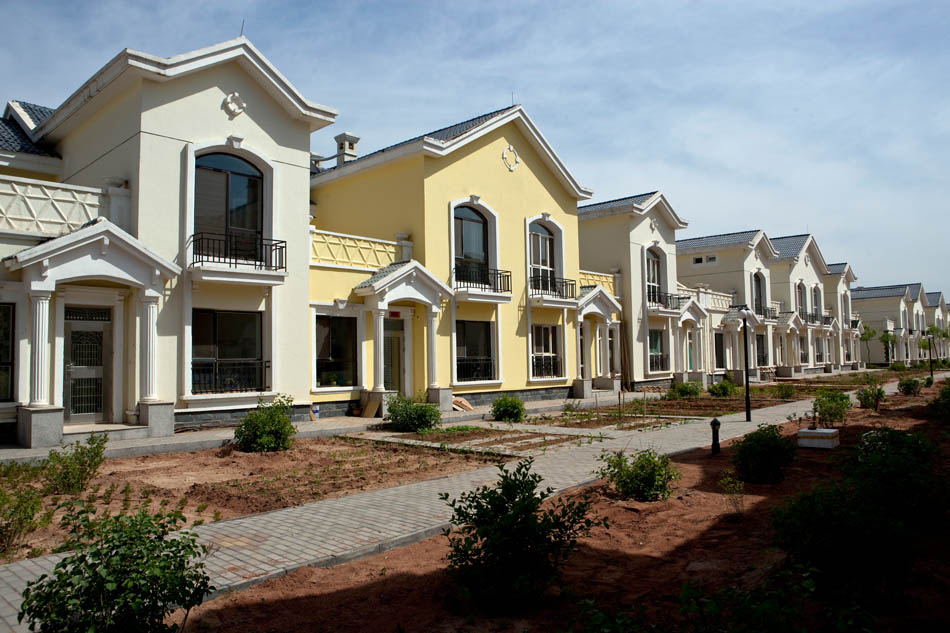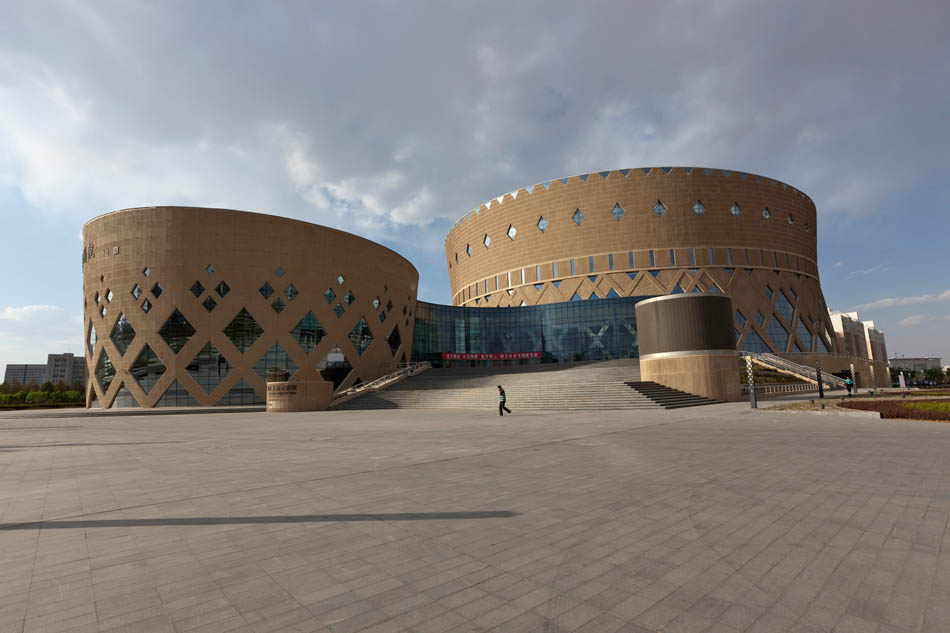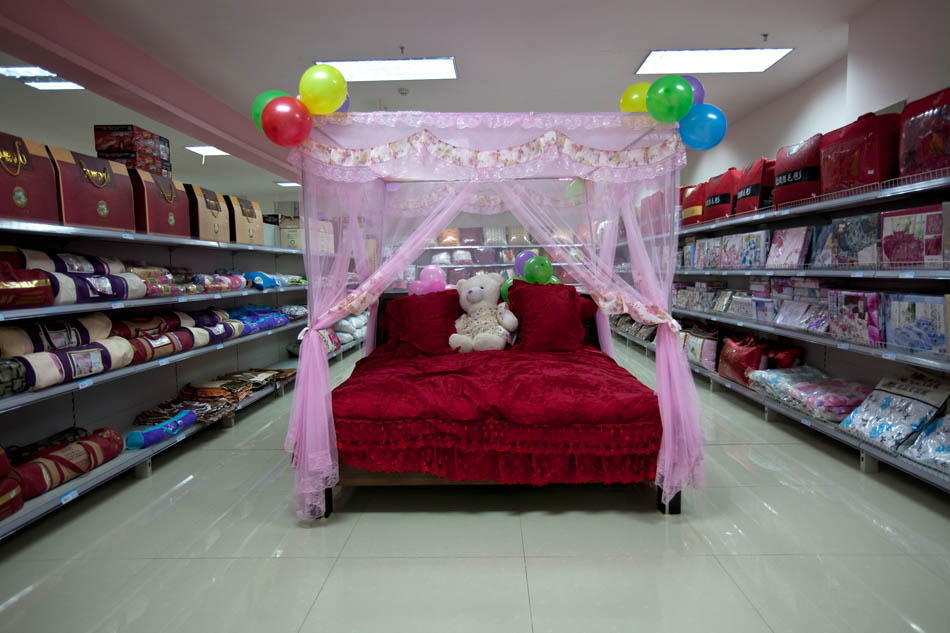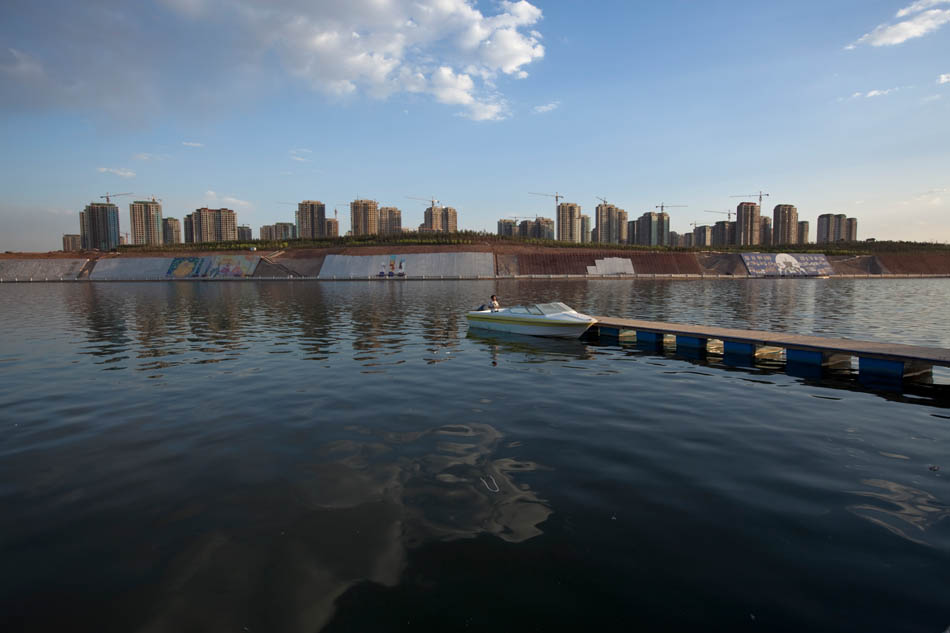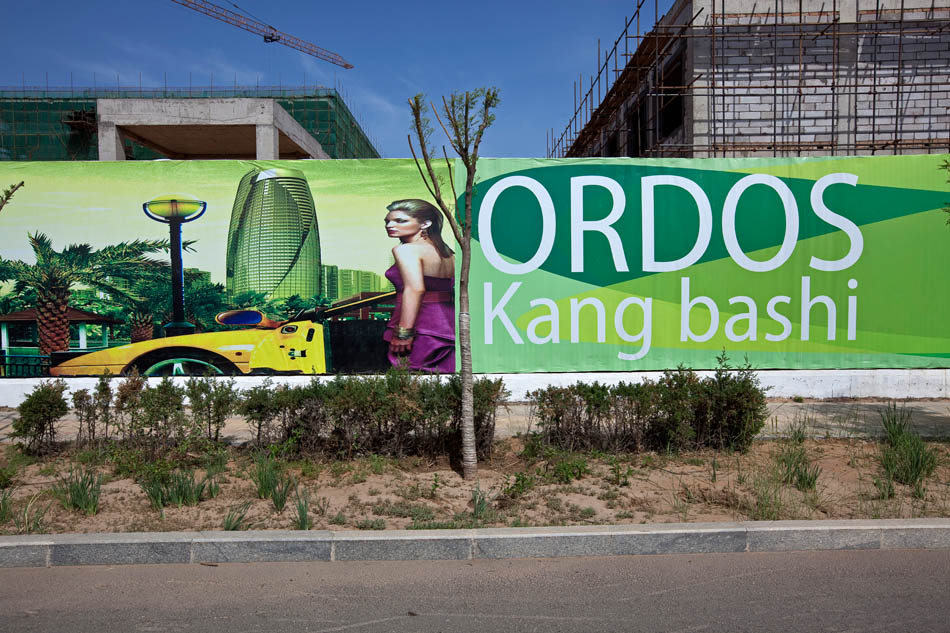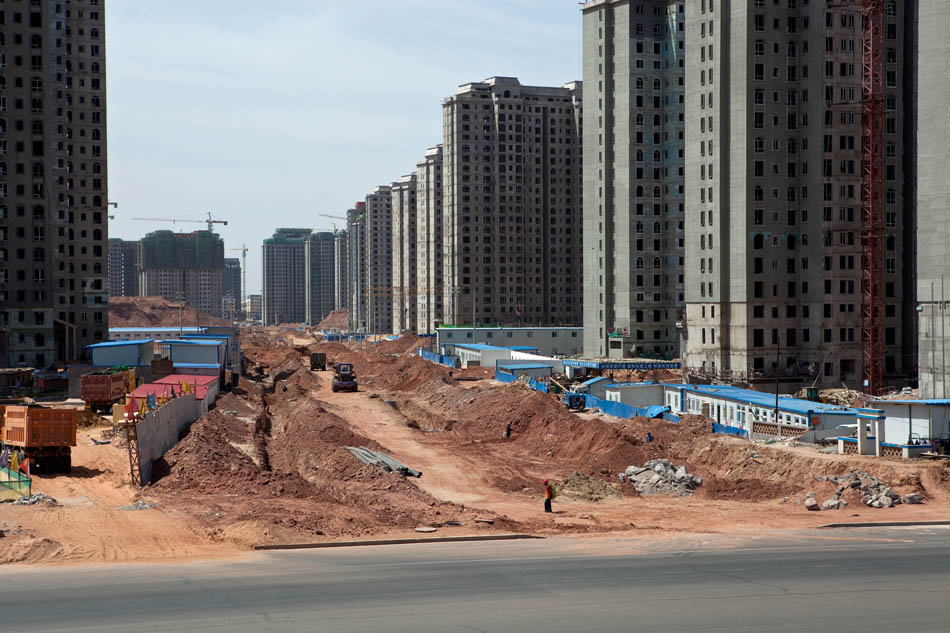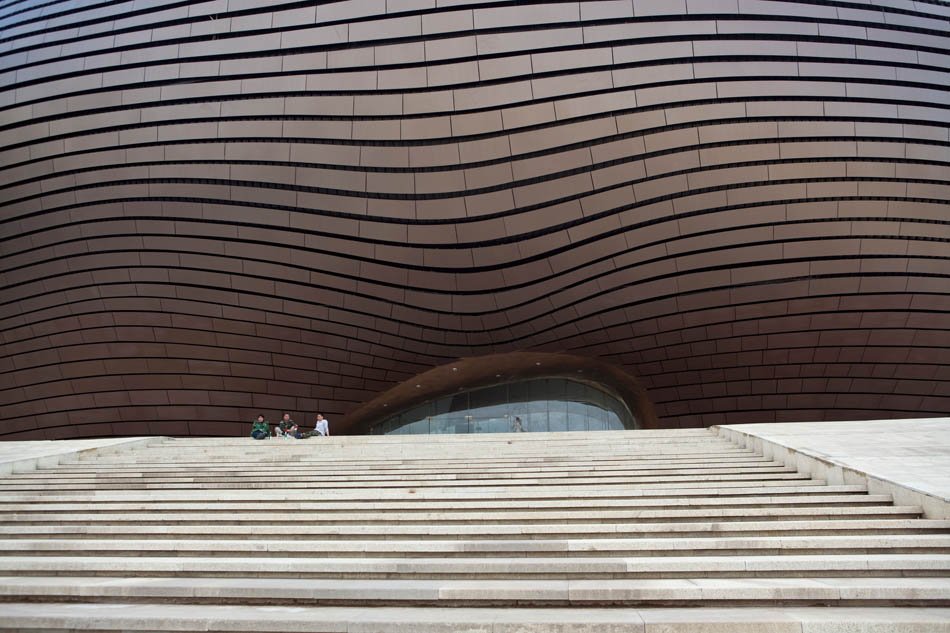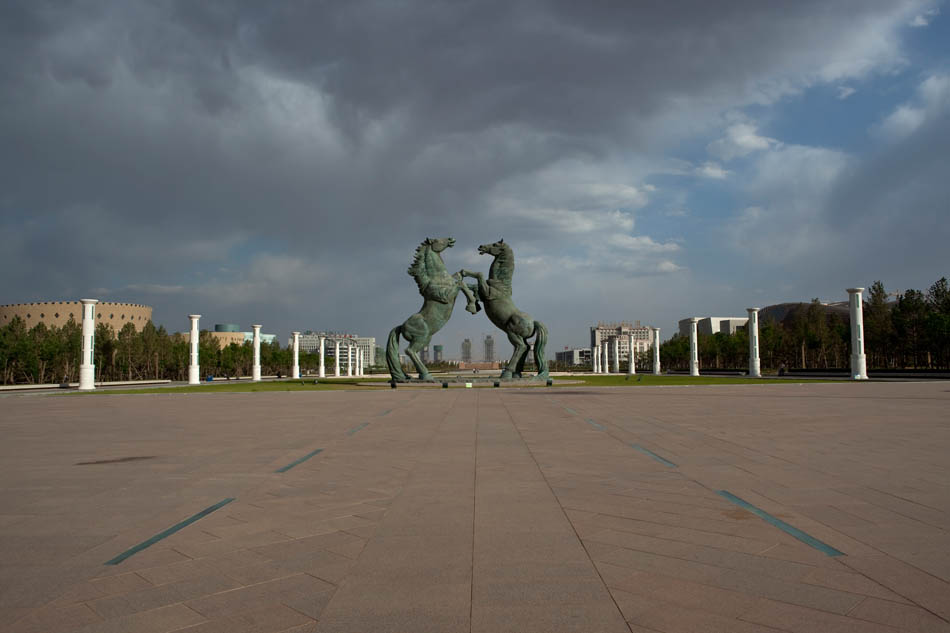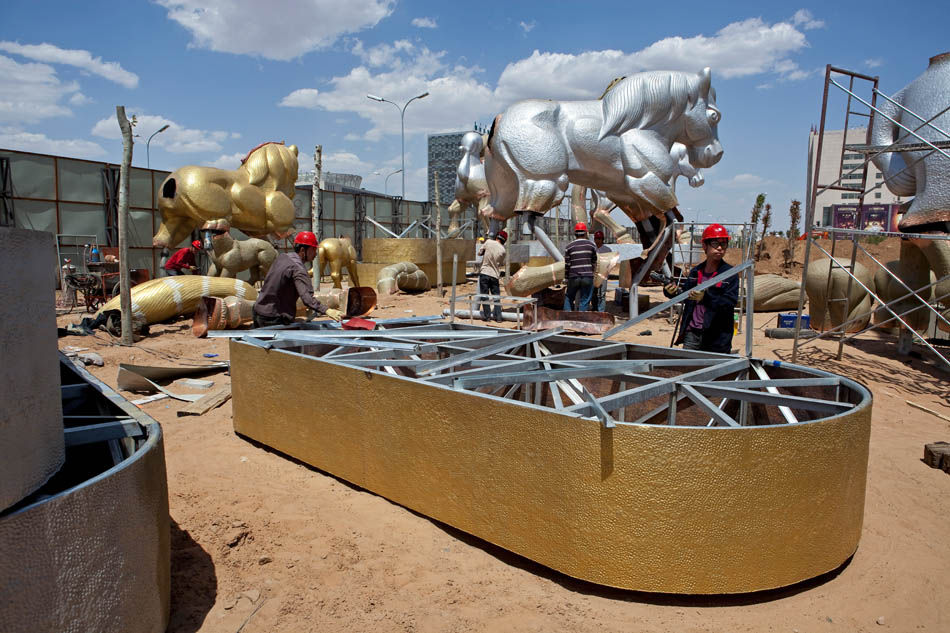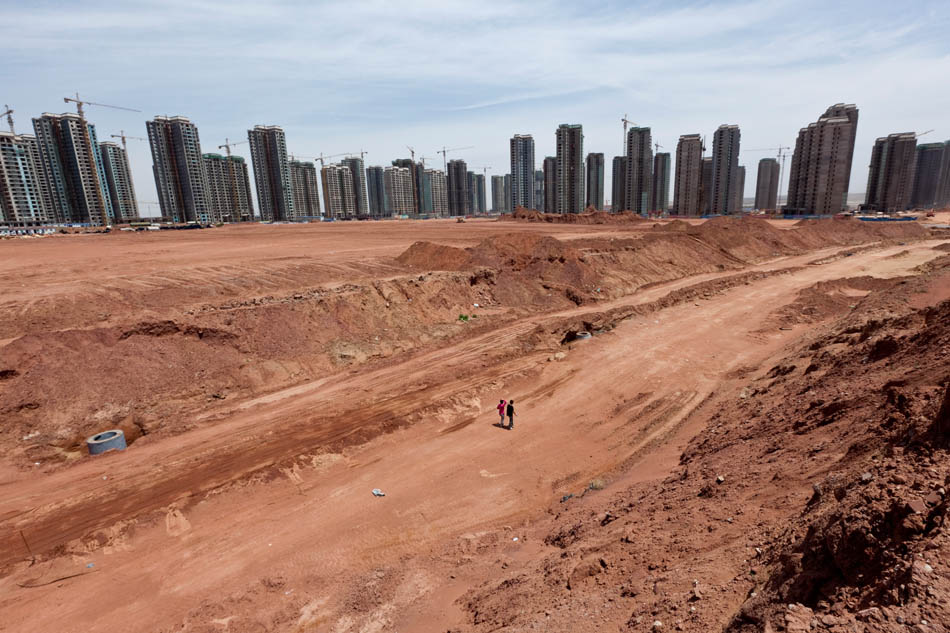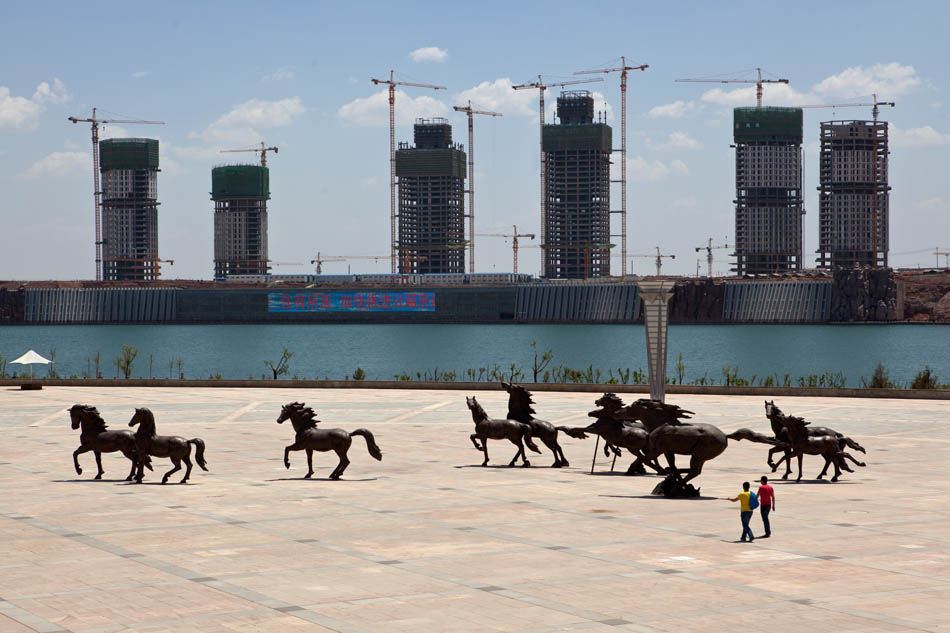Mar 19, 2012 | Art, Development
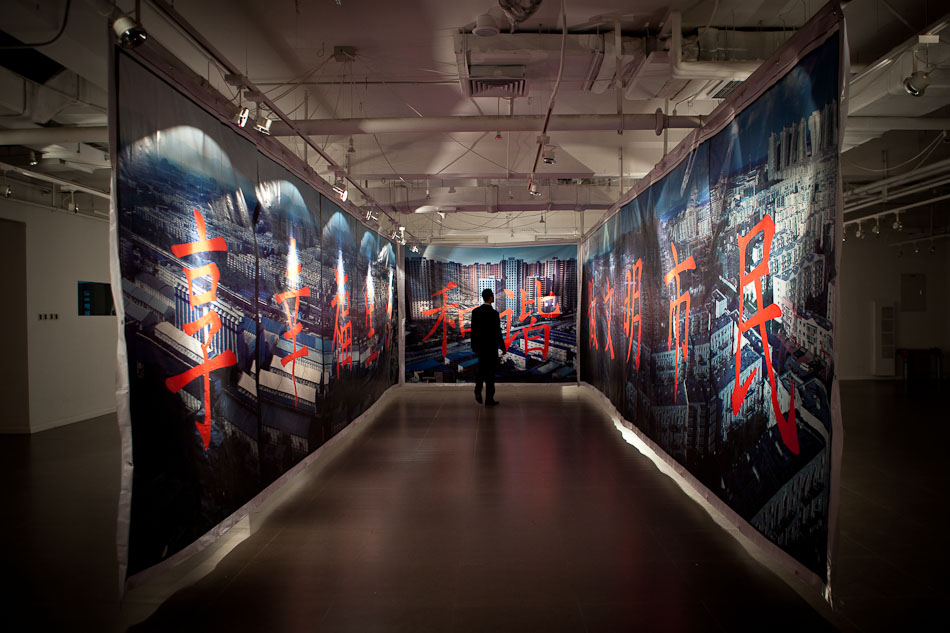
Check out my newest creation. This incarnation of Visions of Modernity examines the “harmonious” transformation of Beijing by recreating propaganda banners espousing “modern” and “civilized” lifestyles. Unfortunately such optimistic rhetoric does not always reflect the current state of urban planning. Megablocks dominate infrastructure surrounding Beijing’s medieval core. Huge swaths of land are handed over to developers and fashioned into towering residential high-rises interwoven with retail and public spaces. The photographs on the tarps depict some of the largest developments in the city. Once constructed, megablocks form distinct urban islands, bounded by grand avenues and further hemmed in by ring roads. Any sense of fluidity within the urban fabric is lost. Entire districts are laid out and rebuilt in such a fashion – like cogs in a machine switched out for newer parts.
As the imposing and monotonous facades of megablocks become the norm, they also reshape the manner in which people live and consume by encouraging social atomization in Western-style apartments. Global commerce immediately took notice of this elaborate transformation of cultural identity. With an increasingly materialistic China in its sights, Ikea opened in Beijing what was at the time its single largest outlet in the world. The compartmentalized lifestyles Ikea put on sale catalyzed a new range of communal practices that are represented in the photographic dioramas attached to the tarps. These Ikea showroom interiors perfectly fit the megablock mold even when unsustainable in nature if implemented throughout the rest of China. There is now a substantial gap between the “modern” and “civilized” vision of Beijing found on banners plastered around the city and how it is actually manifesting in daily practice. Any sense of harmony remains elusive in the midst of this developmental explosion.
For this installation I strung together tarps measuring up to ten meters in length to create photographic corridors of urban landscapes emblazoned with actual propaganda messages used by the Beijing municipal government. Small holes are then cut into particular buildings on the tarps that reveal photographic dioramas of Ikea lit by a single bulb. The size of the installation can be adapted to fit almost any space. In the future I would like it to cover entire buildings. All photographs were taken in Beijing. Check out the video below for a better feel.
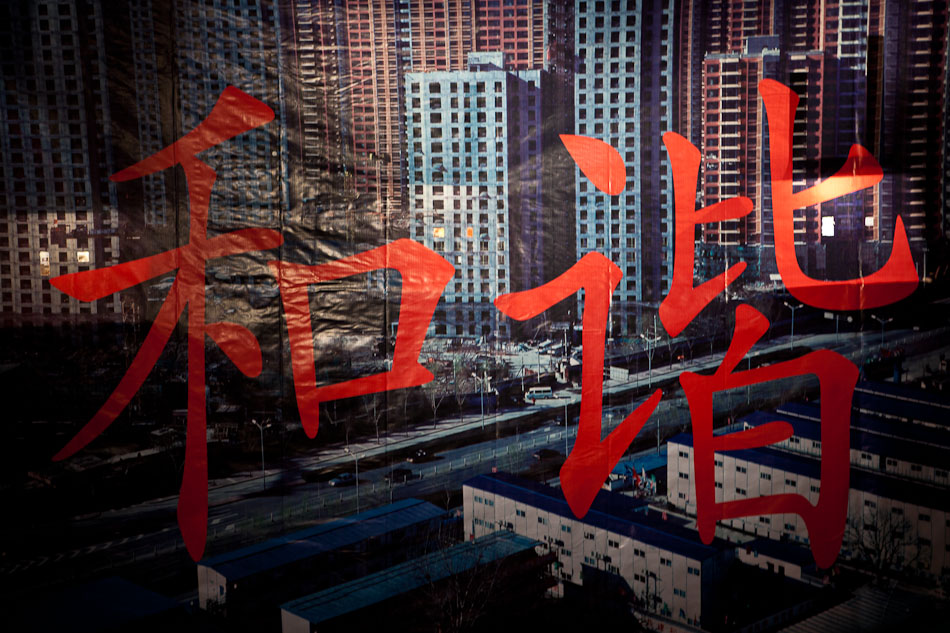
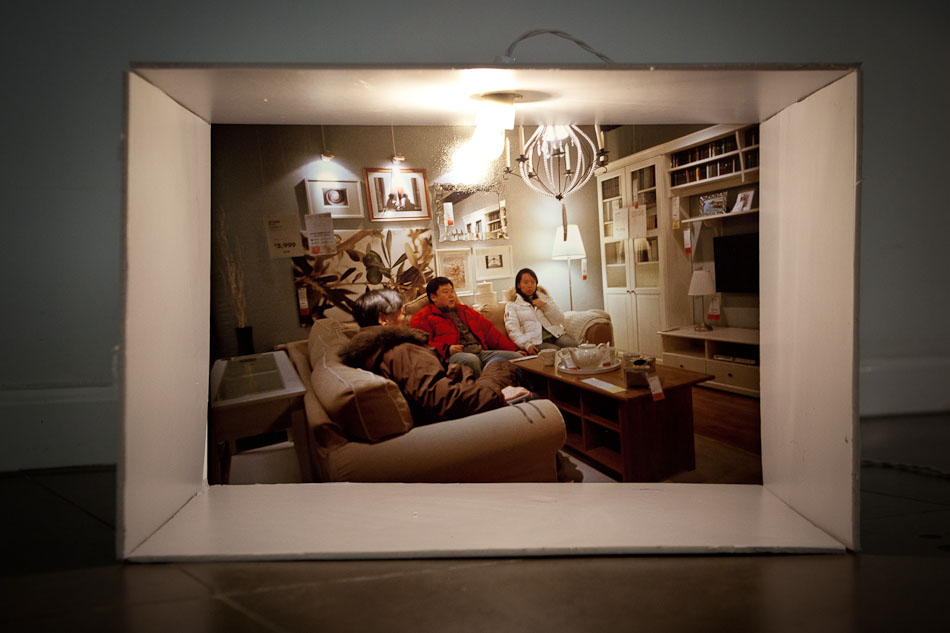
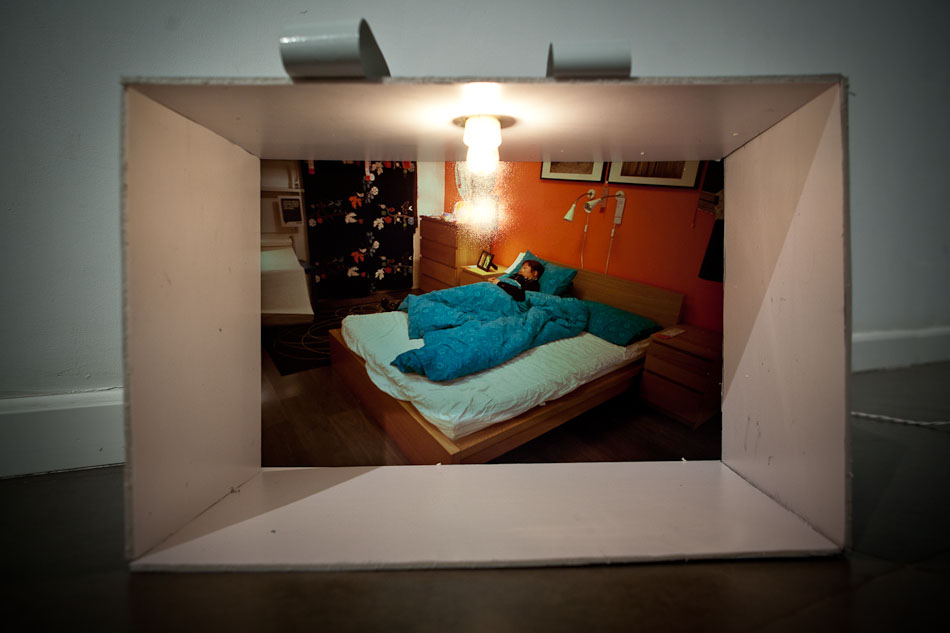
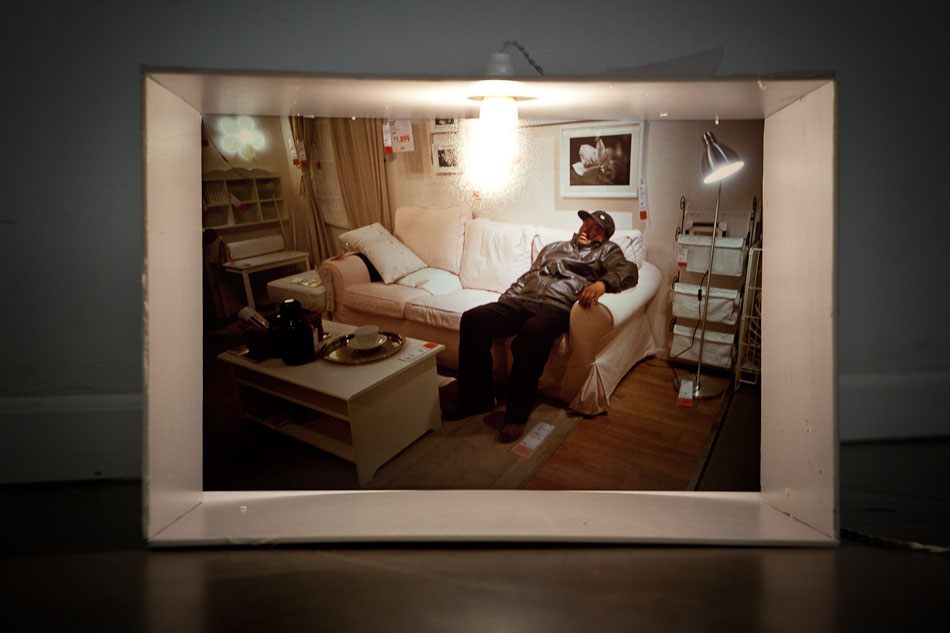
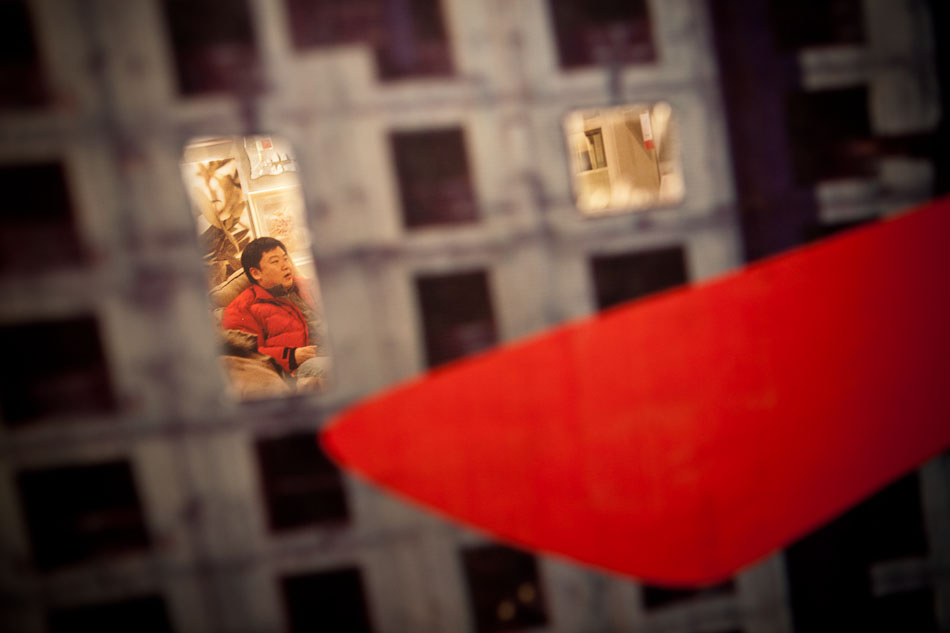
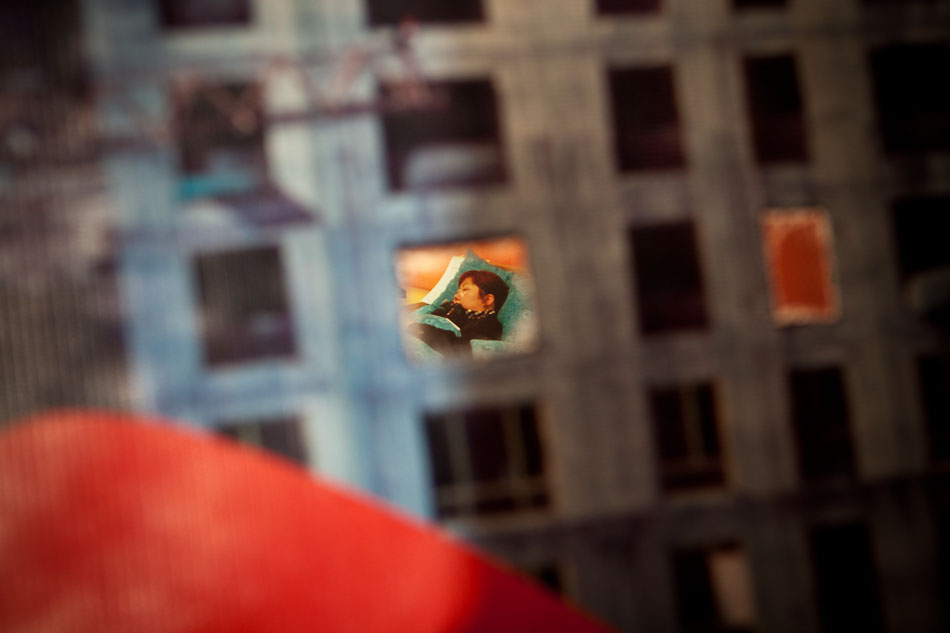
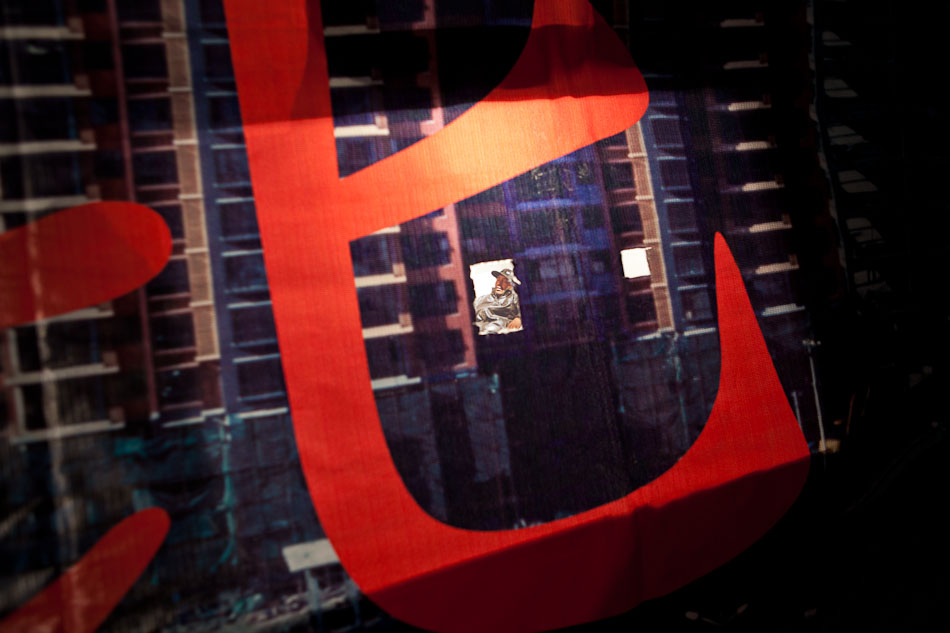
Mar 13, 2012 | Architecture, Clippings
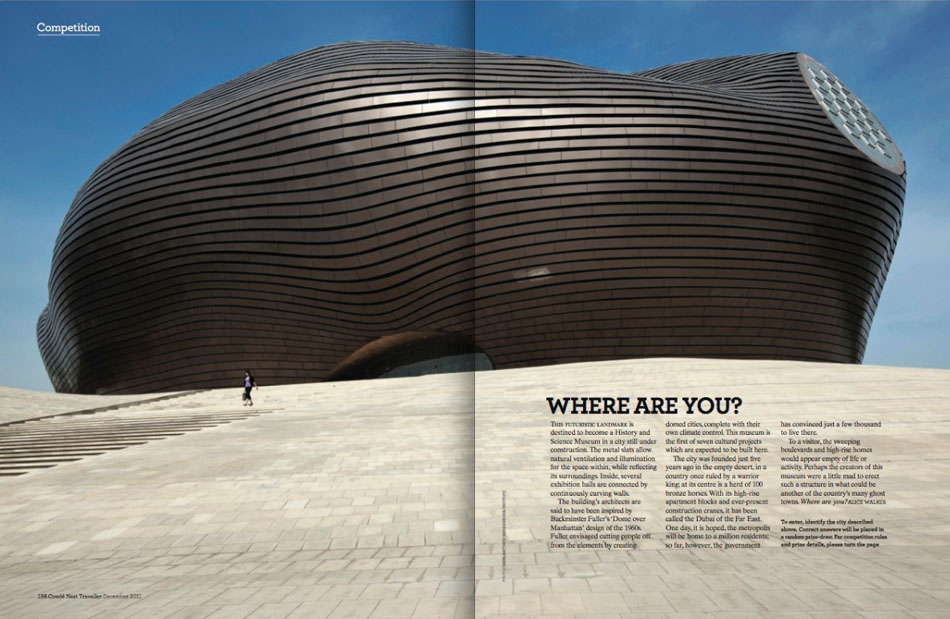
One of my photographs from the amazingly ridiculous Kangbashi district in Ordos was featured in Conde Nast Traveler this past month. The building shown is the Ordos Museum designed by MAD architects, one of the preeminent Chinese architecture firms founded by Ma Yansong who previously toiled as a project designer for Zaha Hadid Architects. The building itself remains a wonder to behold as its irregular shape clashes with the geometrical grid that binds the rest of the newfangled district. Whether or not it will see any use is the real question now that it finally opened. The municipal government can barely get people to stay put in the Kangbashi residential developments, let alone consistently fill up over 40,000 square meters of exhibition space. The flagship cultural center of Ordos will probably accumulate more sand from the Gobi desert than actual visitors. Anyway, I will be featuring more photographs of MAD buildings in the near future thanks to my first assignment with The New York Times Magazine. In the meantime, you can check out some extra photographs I took of the unfinished interior.
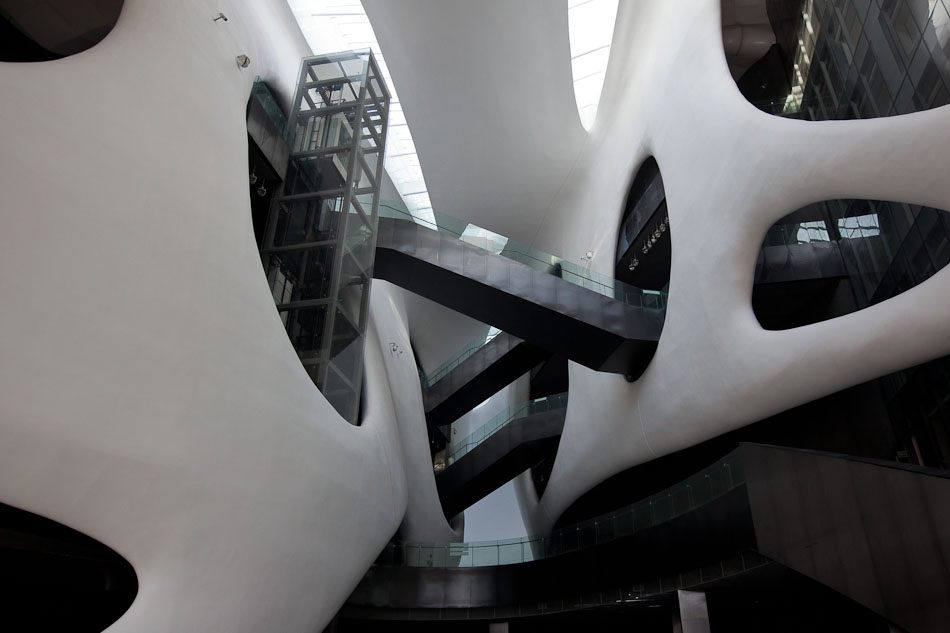
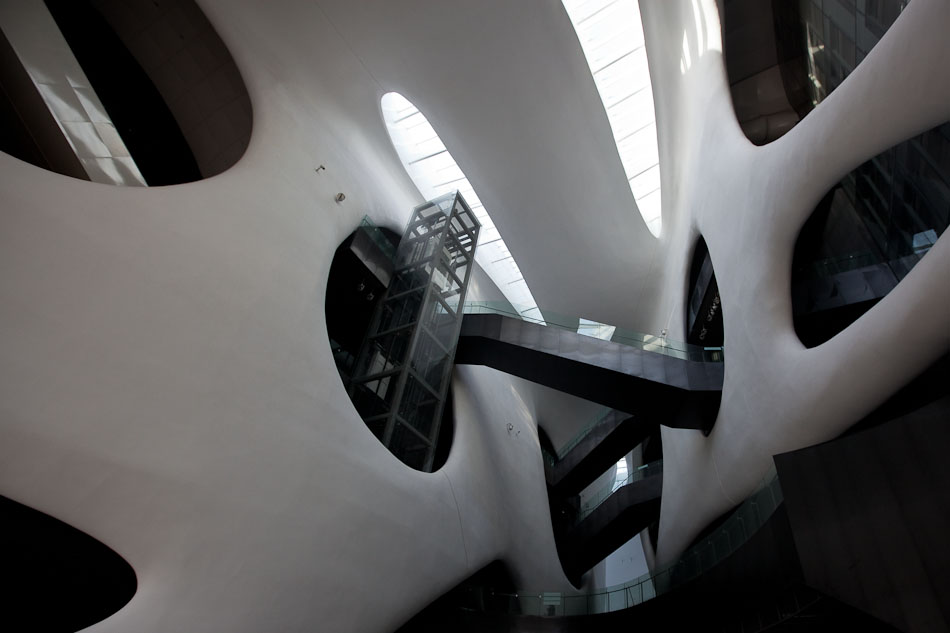
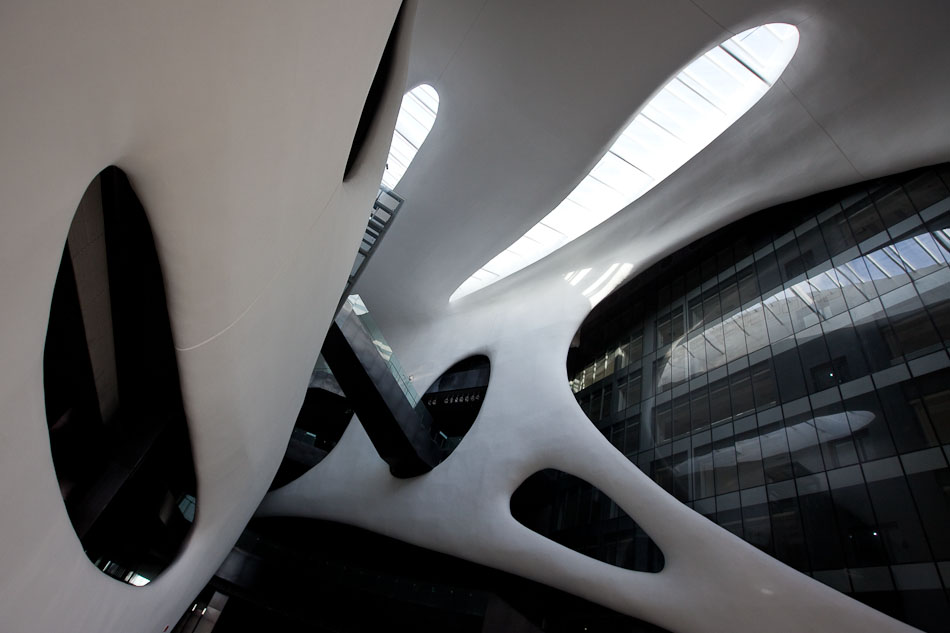
Nov 14, 2011 | Clippings
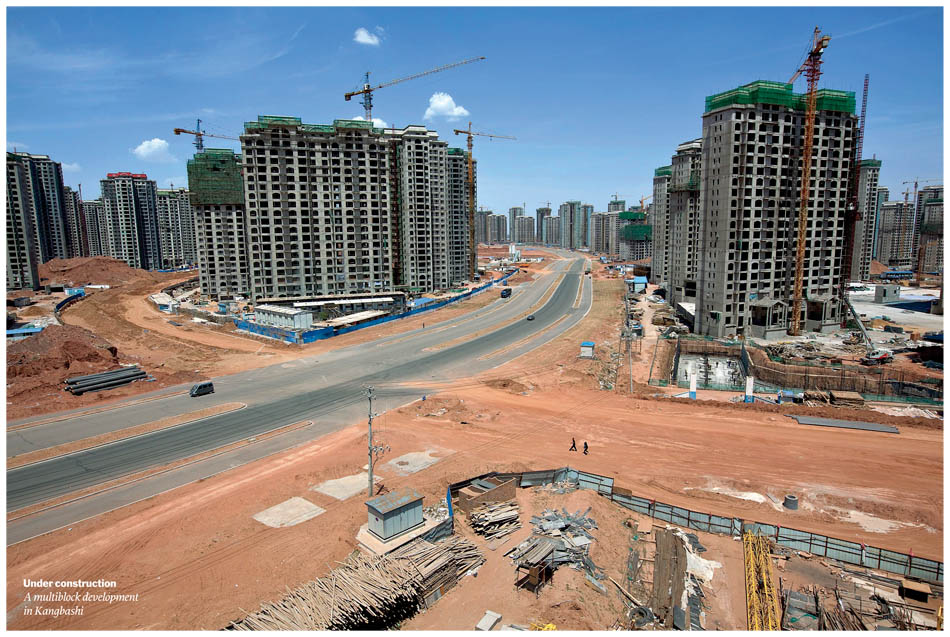
I’m sorry I’m so late with posting these clippings, but I have been traveling a lot recently. Last month Time Magazine featured my photographs from The Ordos Real Estate Bubble: An Empty Chinese Metropolis series in a piece on China’s precarious real estate market. Property prices have been skyrocketing over the past three years thanks to mass speculation by developers and government support of infrastructure development. For some time it was easily one of the best investments in the country and people would camp out on streets in order to buy apartments in especially hot markets in Shanghai and Sanya. Now it seems like the tide is finally going to turn. The real question is whether or not there is going to be a soft or hard landing for property prices. The China real estate sector might be most important financial market in the global economy, and a sudden pop would send international markets into a downward spiral. I don’t think this is going to happen, but people are starting to wake up and realize how overheated housing and commercial markets are in major urban centers. Many of these newfangled luxury developments remain empty and prices are starting to drop. It’s going to be interesting to see how this story unfolds over the next few months.
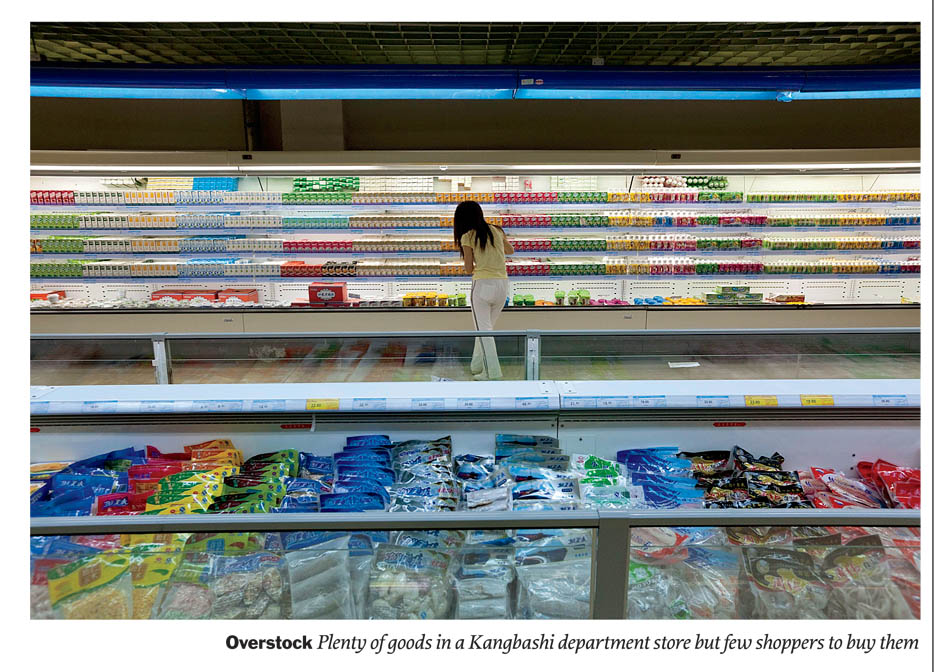
Oct 7, 2011 | Counterfeit Paradises, Development, Society
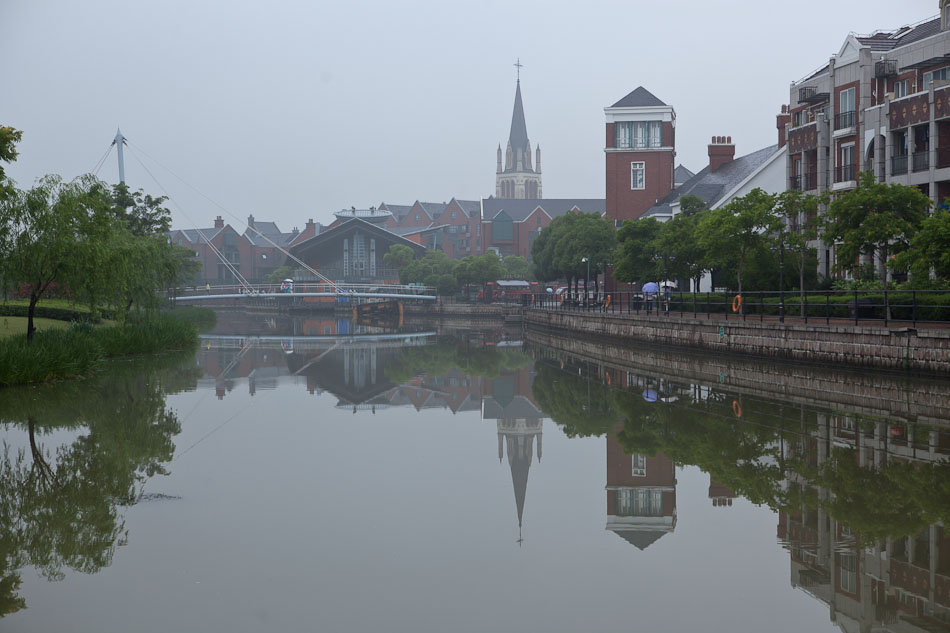
This place is well documented, but fits into my Counterfeit Paradises series as Shanghai remains one of the fastest growing cities on the planet. In order to keep up with demand, the municipal government must supply housing for up to 400,000 new residents every year. In an effort to provide a bit of flash and diversity to the monotony of Chinese urban sprawl, developers broke ground on Songjiang New City which included nine satellite villages utilizing design elements from various European countries. Thames Town, modeled after quaint English hamlets, was the centerpiece and eventually the largest debacle after failing to attract permanent residents. The English-themed restaurants and stores remain shuttered while the streets only see the passing of young couples posing for wedding photographs. Far from the hustle and bustle of downtown Shanghai, the Thames Town Church seems poised to continue without a congregation for the foreseeable future.
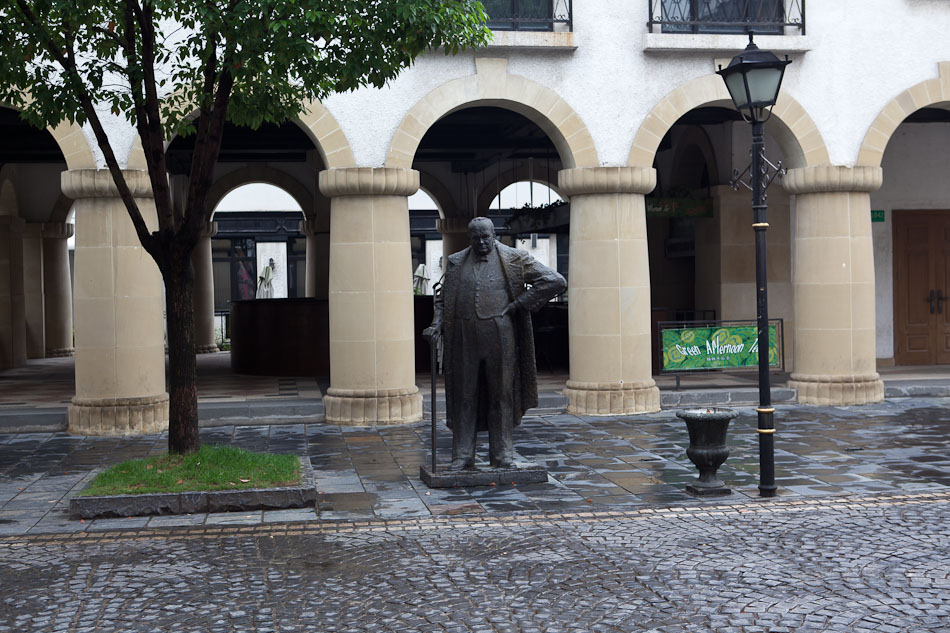

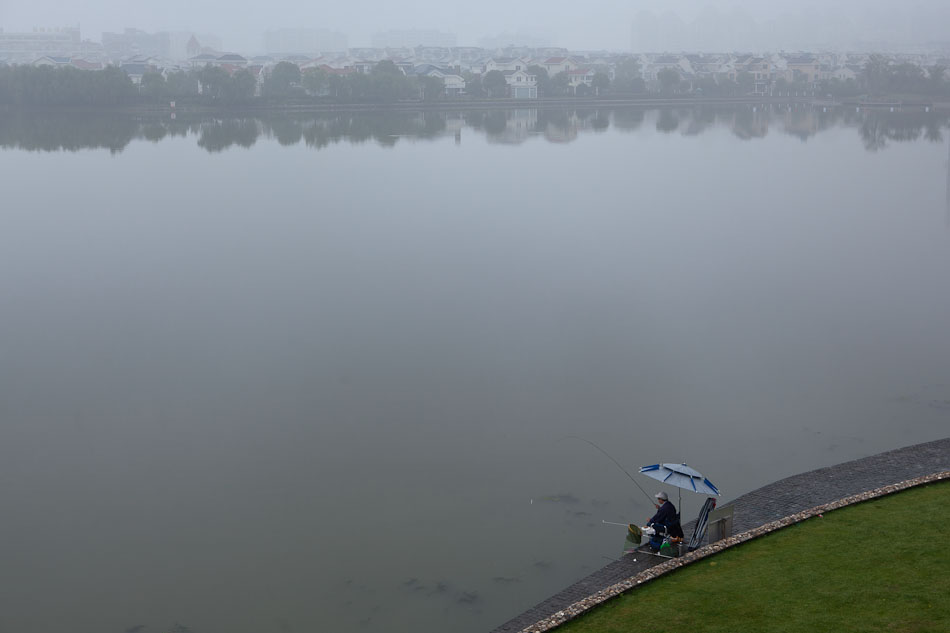
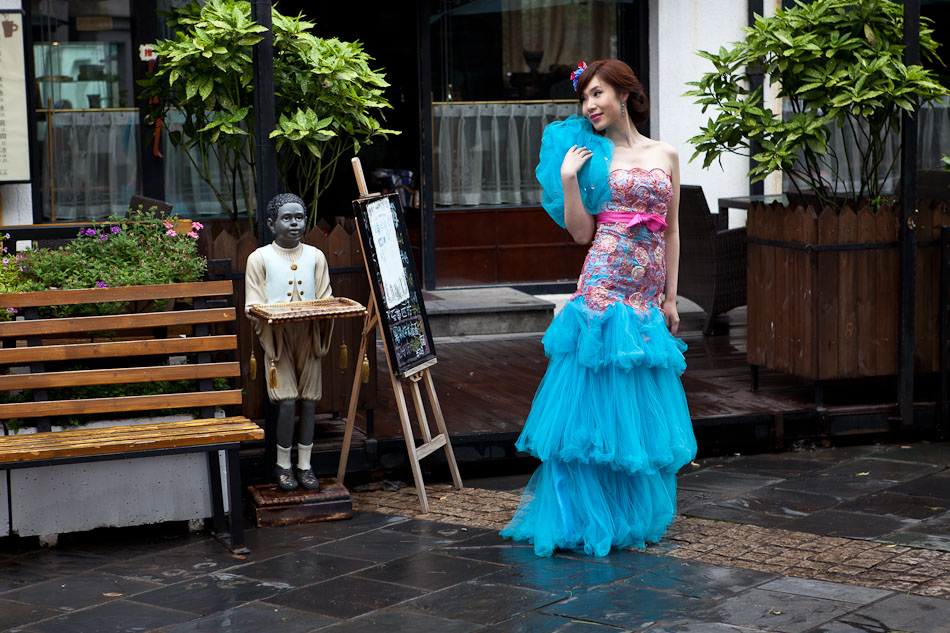


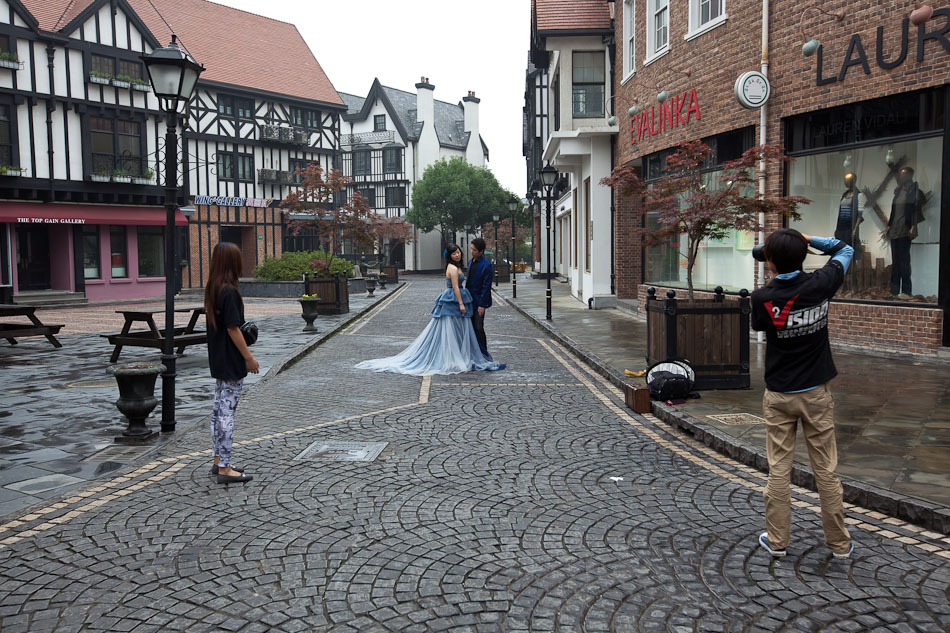
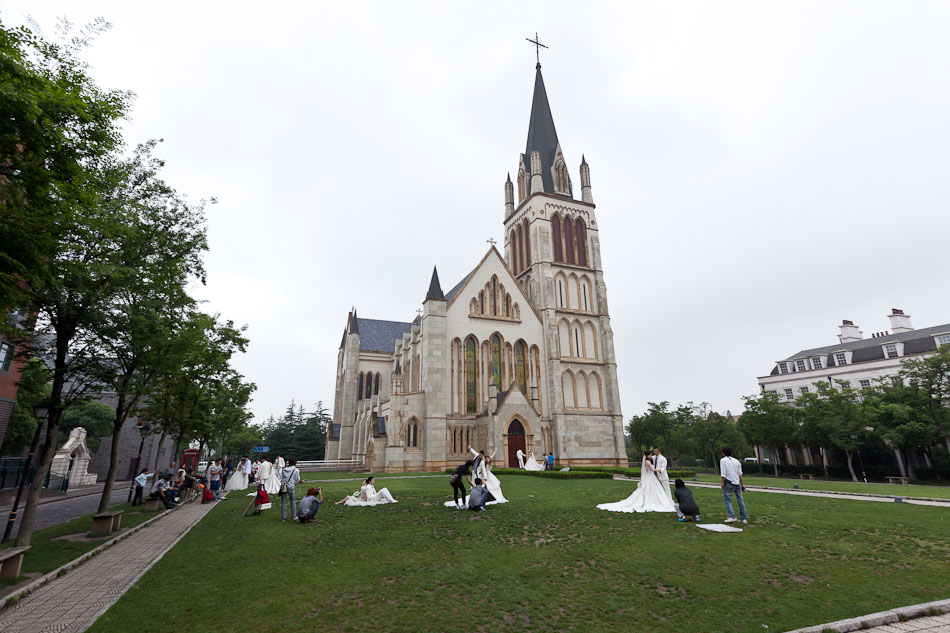

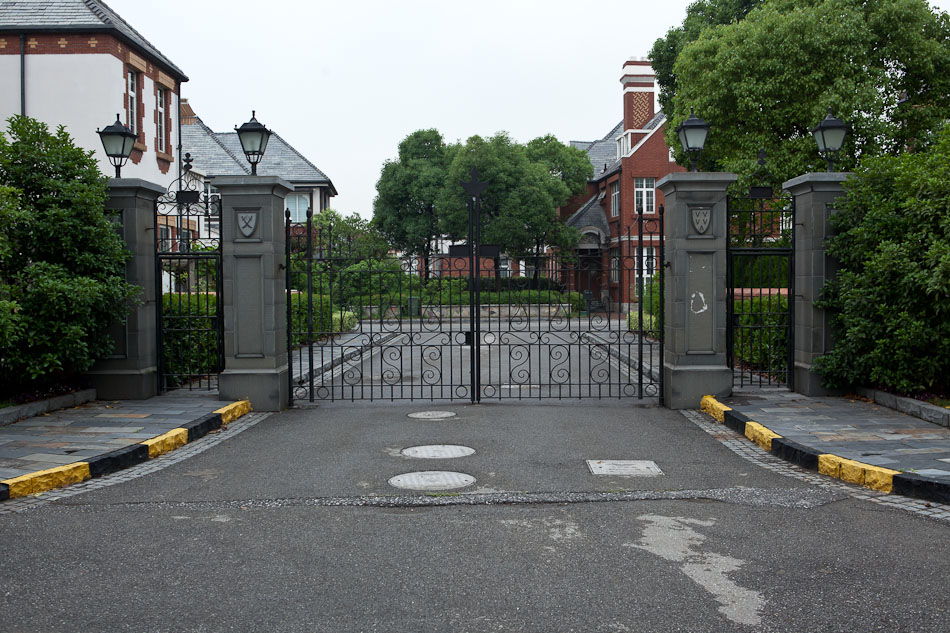
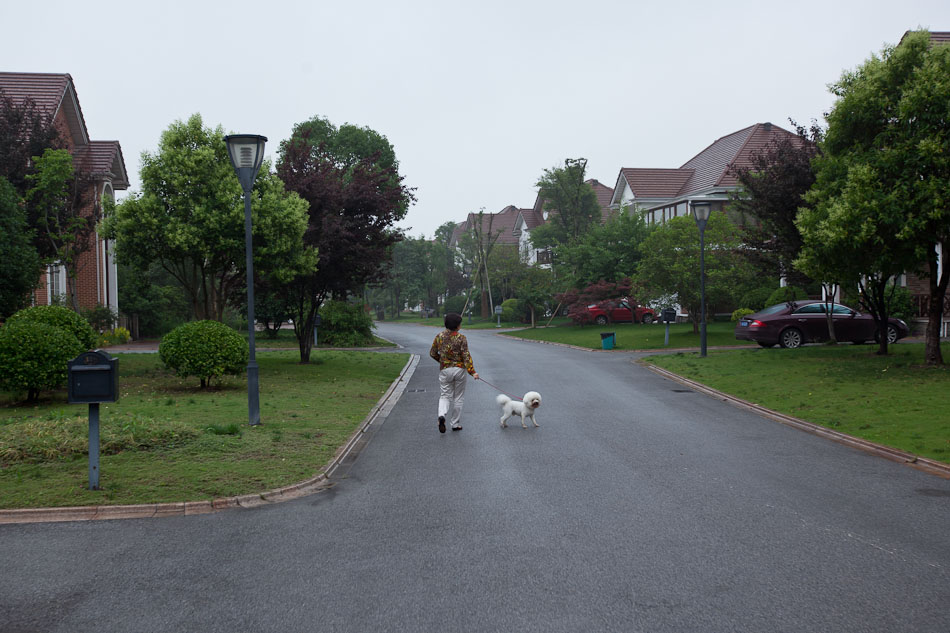
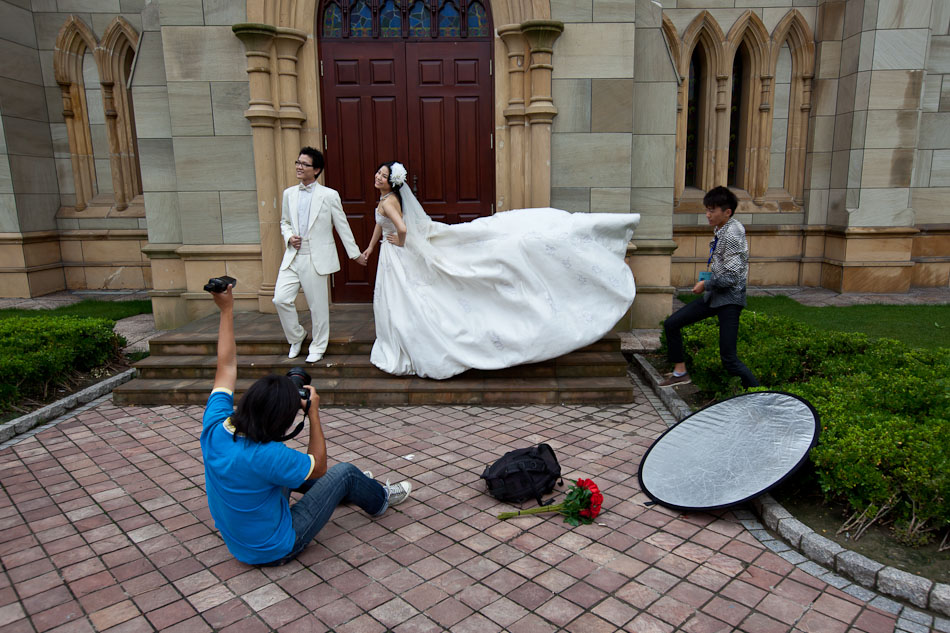
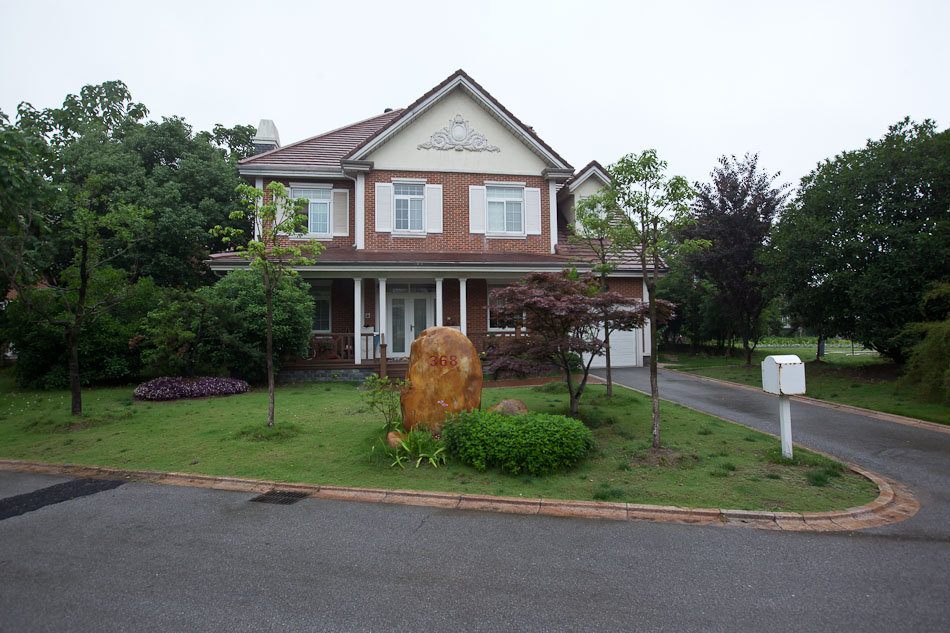

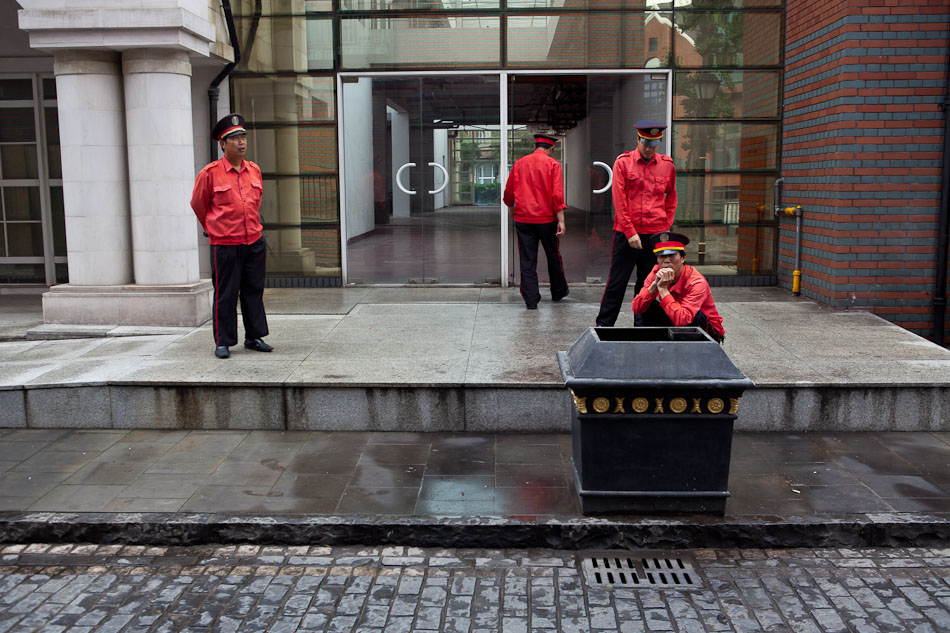

Sep 3, 2011 | Architecture, Counterfeit Paradises, Development
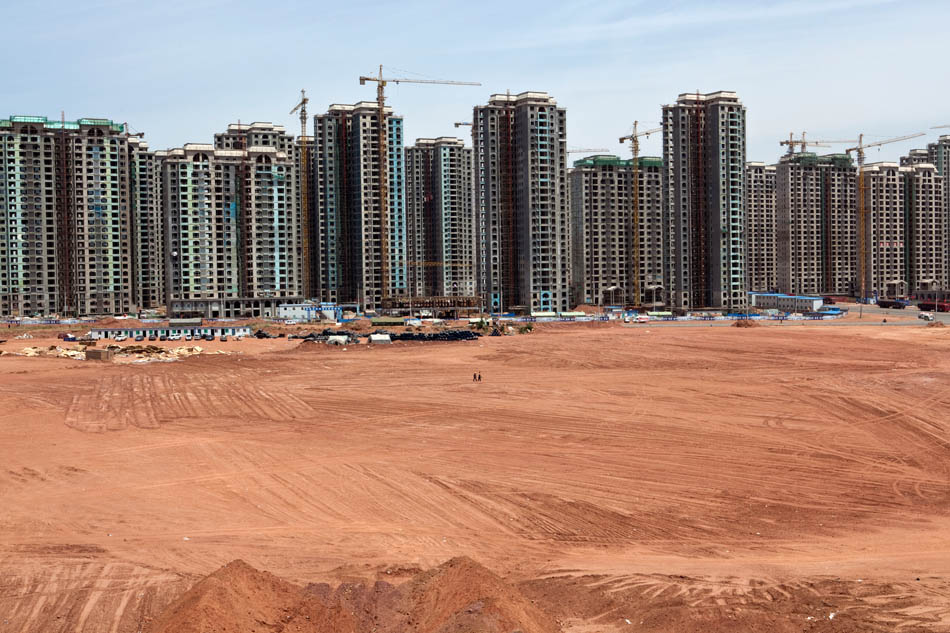
The arid landscape around Ordos was never a forgiving place. Its remoteness and lack of ground water always kept growth in check. Now the Inner Mongolian mining center produces a third of China’s coal and the municipal government decided to use the extra revenues to literally build an entire new city. Located 25 kilometers west of the old town, the Kangbashi/康巴什 new district sports a museum, opera house, library, cultural center, sculpture parks, malls and endless rows of megablock housing. Designed to accomodate a population upwards to a million people, only 30,000 have decided to make the move into the newfangled developments. For now the strange new city that popped out of the sands remains largely deserted. Only a handful of locals walk amidst the abstract shapes and glass-covered malls of Kangbashi. It is one of many locations in China that point to a real estate bubble just waiting to pop.


